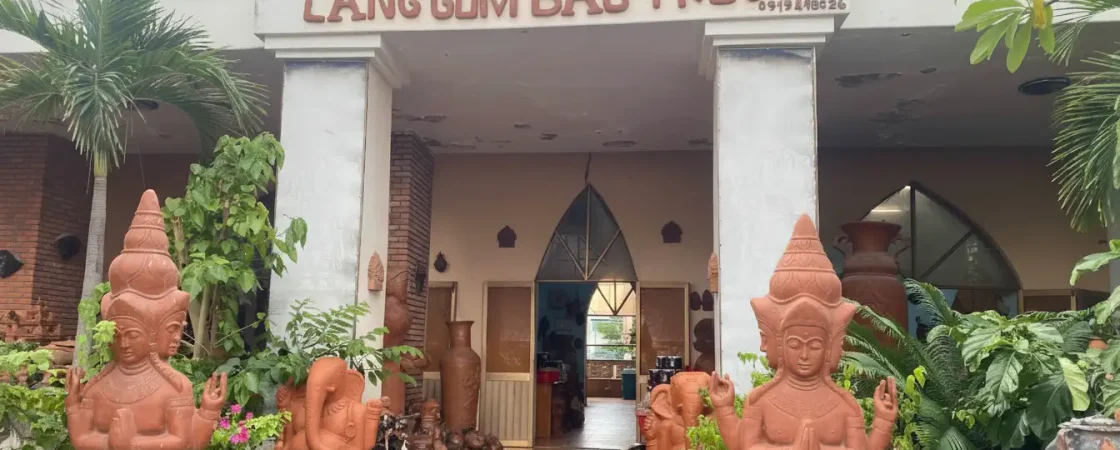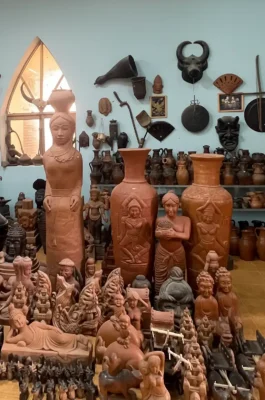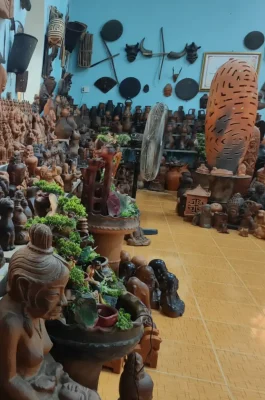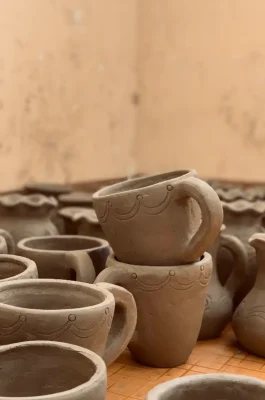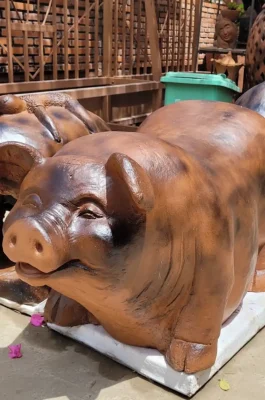Bàu Trúc Pottery Village (Làng Gốm Bàu Trúc) stands as a living museum of Cham culture and craftsmanship. Recognized as one of the oldest pottery villages in Southeast Asia, its traditions date back over 800 years to the era of the Cham Kingdom. The village preserves a distinct, non-industrial pottery-making technique that captivates visitors with its simplicity and authenticity.
Unique Traditional Craftsmanship
The pottery method in Bàu Trúc is fundamentally different from that of most other ceramic centers worldwide, highlighting the village’s commitment to heritage.
No Potter’s Wheel: Artisans craft items entirely by hand. They place the clay on a small pedestal, circling backward around the piece to shape the clay. This technique gives the pottery its characteristic rough, organic texture and demonstrates the high skill of the potters.
Natural Materials: The clay comes from the nearby Quán Thẻ (Quao) River, which villagers mix with fine river sand. This specific composition makes the fired products durable and porous. Water jars made in Bàu Trúc are famous for keeping water cooler than the surrounding air.
Open-Air Firing: The potters fire their products outdoors using straw, dry wood, and rice husks, rather than modern kilns. This method gives the ceramics their unique, natural earth tones, ranging from reddish-brown to black-grey streaks.
Women’s Tradition: Traditionally, Cham women are the primary potters in Bàu Trúc. The craft passes down from mother to daughter, ensuring the preservation of ancestral techniques.

History, Culture, and Tourist Experience
The village offers a rich cultural experience that extends beyond the pottery itself.
Cham Cultural Heritage: The village honors its founder, Po Klong Chanh. Pottery making is deeply interwoven with Cham spiritual and daily life. You find products ranging from everyday household items to intricate statues of Cham deities and dancers.
Hands-On Experience: Tourists can observe the entire process from clay preparation to decoration. Many workshops offer opportunities to try your hand at shaping clay, creating a personal souvenir to take home.
Shopping: Bàu Trúc ceramics are highly prized for their artistic and cultural value. Visitors purchase small, beautifully crafted pieces or larger decorative items, knowing they support a UNESCO-recognized intangible cultural heritage.
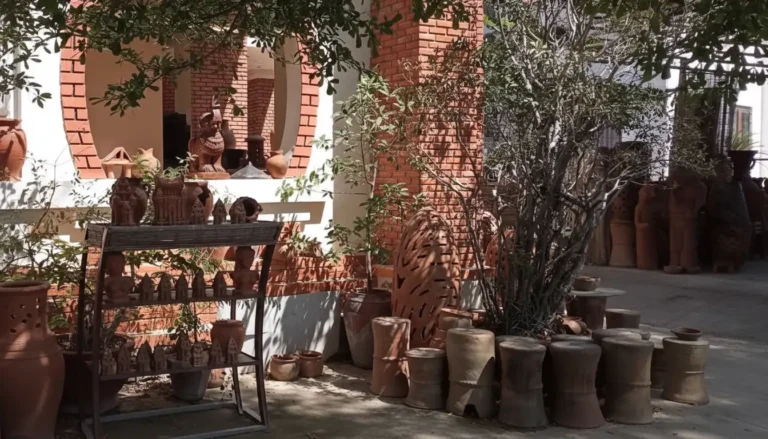
Essential Visitor Information
Plan your visit to fully immerse yourself in the experience and respect the local culture.
| Information Point | Detail | Note |
|---|---|---|
| Entrance Fee | Generally Free | Visitors do not pay an entrance fee to the village itself. You only pay for purchased items or participation in workshops. |
| Opening Hours | Typically 8:00 AM – 5:00 PM | It is best to visit during daylight hours to observe the outdoor firing process and crafting activities. |
| Best Time to Visit | Year-round | Ninh Thuận's dry climate is suitable for visiting anytime, but the morning offers cooler temperatures. |
| Local Tip | Combine your trip with a visit to the nearby Mỹ Nghiệp Brocade Weaving Village to experience more Cham traditional crafts. |
Bàu Trúc Pottery Village provides a fascinating and unique window into the enduring art and culture of the Cham people. Your visit directly supports the continuation of this invaluable ancient tradition.
